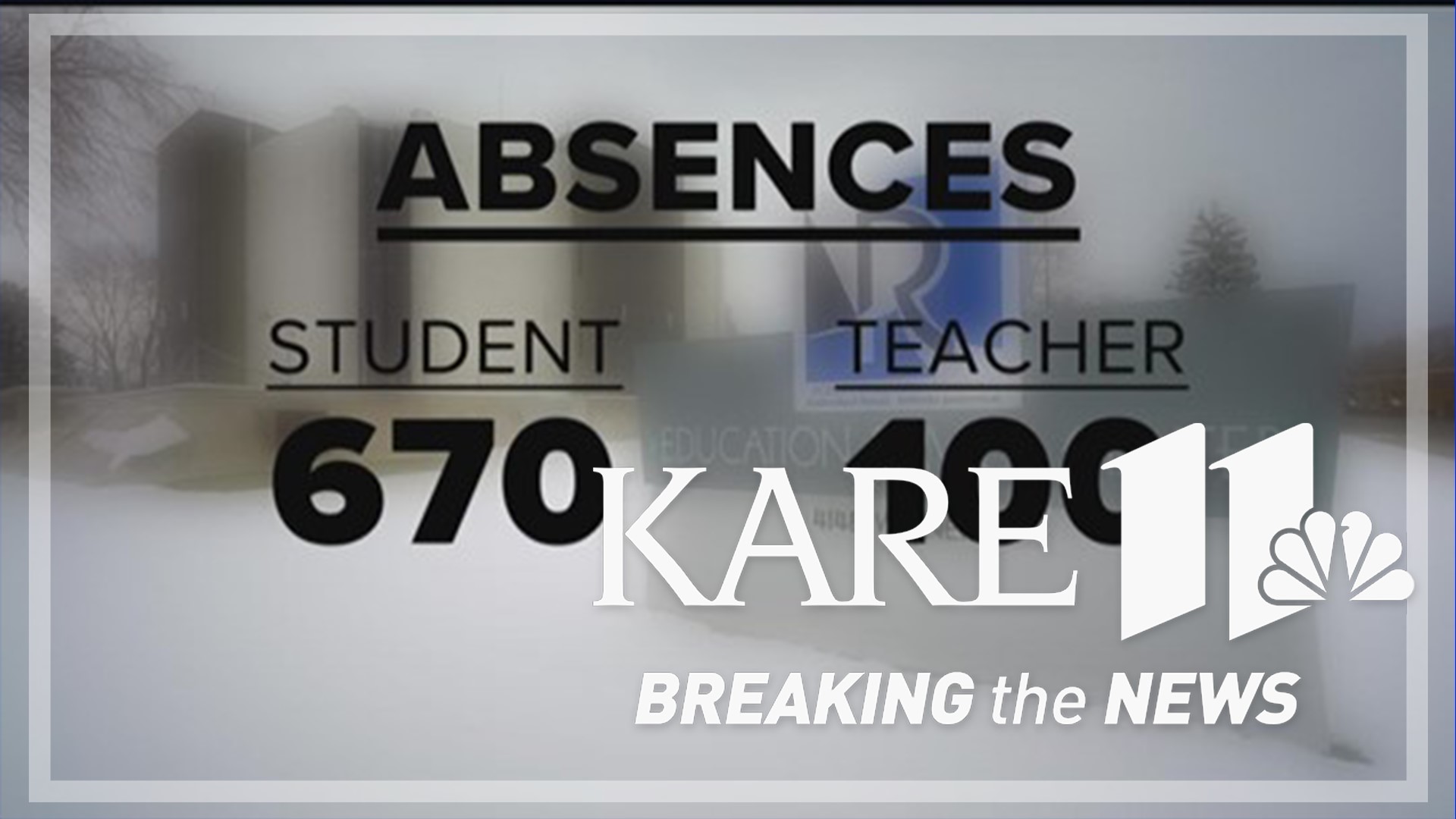ST PAUL, Minn. — The shift in seasons that has been visible outside Phalen Lake Elementary in St. Paul this week, has coincided with another kind of shift inside the nurse's office.
"I think we're seeing much more influenza now, than RSV," said school nurse Michelle Mauder. "We probably have about 10% of our kids out every day."
Those absences aren't just adding up for kids. Mauder says more staff members have also been gone, either due to illness or caring for their own sick kids.
"The thing that we're noticing the most is that people aren't just out for a day or two," she said. "When they're getting this, they're out for three to five days, minimum. The fever just seems to be lasting longer and they're feeling sick for a lot longer than normal."
Similar reports are coming in across the region. In the last week, Robbinsdale Area Schools is averaging about 670 student absences (more than 6% of it's total students) and 100 teacher and education assistant absences each day.
"We are seeing flu, RSV and COVID cases where they are staying out, outside of five days," said Amy O'Hern, executive director of HR for Robbinsdale Area Schools.
All of that sick time has added up nationally too, and by extension, it's taking a big toll on parents across all industries. According to the Bureau of Labor Statistics, more than 100,000 parents missed work last month due to child-care problems, a historic high that even topped the worst periods of the pandemic.
"It's not the best scenario," O'Hern said.
That might be the understatement of the year, once you factor in the status of substitute teachers and child care staff.
O'Hern: "For substitute teachers, we are average about a 43% fill rate each day, which is not great. Pre-pandemic, we were at about a 95% fill rate for subs."
Erdahl: "That's a big difference, so to get to 100%, are you making that up with just staff in house?"
O'Hern: "Yes. Our licensed staff are stepping up to cover classrooms during their break times, their prep time, their lunch period, because we are so short with staff coverage. They are being compensated, in addition to their annual salary, but still it's trying, and we want to make sure that we are watching out for the mental health of our staff."
In an effort to relieve some of that added stress, she says administration staff are also helping fill in whenever and wherever possible.
Erdahl: "Has it gotten to the point where you've had to cancel some classes?"
O'Hern: "We aren't canceling classes because, especially in secondary, so many of our classes are online. They are able to go into their school accounts and still continue to work and then they are being supervised by additional staff in the building."
According to the Bureau of Labor Statistics, public schools and day cares are still short more than 380,000 employees from pre-pandemic levels, meaning relief isn't likely to come until this season of sickness subsides.
Mauder: "It seems like it usually has waited until after the Thanksgiving break, we come back and we see a big uptick in illness, so this is much earlier than what we're used to."
Erdahl: "You hope that means it ends earlier, I would imagine."
Mauder: "I really do, yes."
Erdahl: "I understand why you're wearing a mask. And you are healthy?"
Mauder: "So far, yes, I've stayed healthy so far. Thankfully."
Watch more local news:
Watch the latest local news from the Twin Cities in our YouTube playlist:

